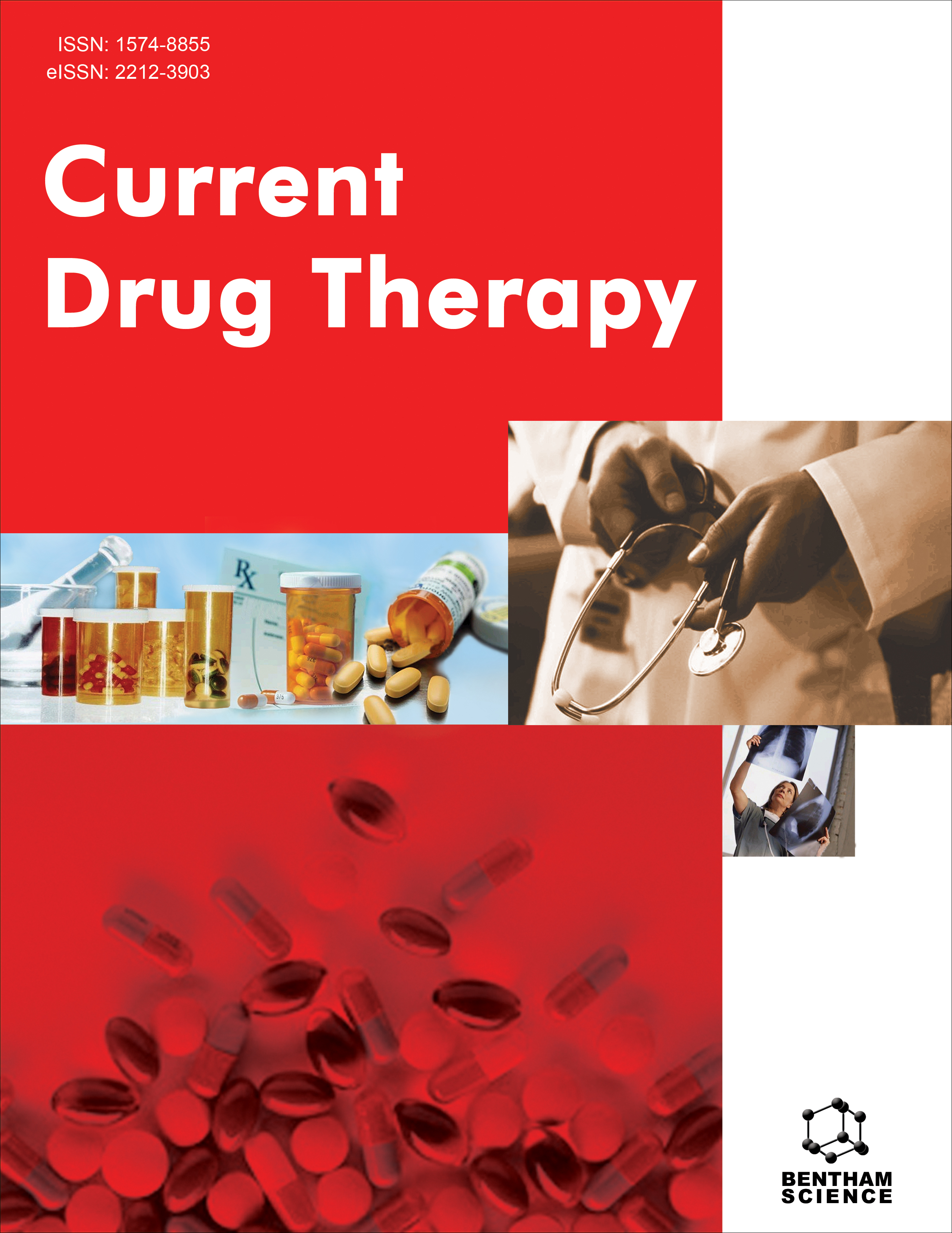- Home
- A-Z Publications
- Current Drug Therapy
- Previous Issues
- Volume 18, Issue 1, 2023
Current Drug Therapy - Volume 18, Issue 1, 2023
Volume 18, Issue 1, 2023
-
-
Neurochemical Signaling in Depression: Impact of Target-Based Pharmaceuticals
More LessAuthors: Khushboo and Bechan SharmaDepression is a chronic, devastating, and frequently occurring disease. Clinical studies have shown the association of depression with atrophy as well as degeneration of nerve cells and glial cells, which contribute to the size and function of specific brain regions that regulate the status of the mind, including depression. The currently available pharmacotherapies can be helpful in the treatment of psychosomatic disorders, inclu Read More
-
-
-
The Effect of Intranasal Oxytocin on Sexual Function in Men and Women: A Systematic Review
More LessAuthors: Zahra Ghorbani and Mojgan MirghafourvandBackground: Intranasal oxytocin can be used as a promising moiety for the treatment of sexual disorders. Objective: This study was carried out to systematically review the effect of intranasal oxytocin on sexual function in men and women. Methods: We systematically searched databases (e.g., Cochrane Central Register of Controlled Trials Library, MEDLINE, Web of Science, Scopus, ProQuest, Google Scholar and Persian databas Read More
-
-
-
Influence of Semax on the Level of Pro- and Anti-Inflammatory Cytokines in Conditions of "Social" Stress
More LessIntroduction: This study was devoted to the experimental study of the effect of Semax (Met-Glu-His-Phe-Pro-Gly-Pro) on the level of pro- and anti-inflammatory cytokines (IL-1β, IL-4, IL- 6, TNF-α, TGF-β1) in conditions of "social" stress. Aim of the Study: To study the effect of Semax on the level of pro- and anti-inflammatory cytokines (IL-1β, IL-4, IL-6, TNF-α, TGF-β1) under conditions of “social” stress. Materials and Methods: Whi Read More
-
-
-
Effective Topical Psoralen Herbal Hydrogel Expending Capsaicin as a Penetration Enhancer
More LessBackground: This research aims to prepare a hydrogel of psoralen and capsaicin extract for topical application using various gelling agents like Carbopol 940, HPMC, Pluronic 127, and Pectin to minimize the side effect of synthetic drugs in treating psoriasis. Natural, synthetic, and semi-synthetic polymers were utilized for the treatment of psoriasis, and provide a number of benefits, including improved skin permeability, Read More
-
-
-
Assessment of Effect of Intra-pocket Delivery of Metronidazole Loaded NTrimethyl Quaternary Ammonium Chitosan Nanoparticles in Treatment of Periodontal Disease
More LessAuthors: Kritika Garg and Pravin TirgarBackground: Conventional drugs like metronidazole for periodontitis have shown several drawbacks. Based on in-vitro and acute toxicity studies on metronidazole-loaded n-trimethyl quaternary ammonium chitosan nanoparticles (NTMET NPs), animal studies were carried out to prove their enhanced activities against periodontitis. Objectives: This study aimed to assess the effect of nanoparticles through an intra-pocket drug Read More
-
-
-
The Effect of Pantoprazole on Tumor Growth and Apoptosis in Gastric Cancer Stem-Like Cells
More LessBackground: Gastric cancer is a daunting global problem with unsatisfactory treatment. Due to the key role of Gastric Cancer Stem-like Cells (GCSCs) in all stages of gastric cancer and the failure of contemporary anticancer therapies, many research efforts are focusing on these treatmentresistant cells. Pantoprazole, as recently considered antitumor agent with well-documented effects on tumorigenesis inhibition Read More
-
-
-
Formulation Development and Optimization of Rosuvastatin Loaded Nanosuspension for Enhancing Dissolution Rate
More LessBackground: Nanotechnology has been considered an auspicious approach over the last twenty years and numerous researchers are making efforts to extend its applications in pharmaceuticals. Recently, various nano-based drug delivery systems, such as nanoparticles, nanoemulgel, nanosuspension, and nanoemulsion, have been developed to deliver varieties of hydrophobics to target sites. Rosuvastatin is a competiti Read More
-
Volumes & issues
-
Volume 20 (2025)
-
Volume 19 (2024)
-
Volume 18 (2023)
-
Volume 17 (2022)
-
Volume 16 (2021)
-
Volume 15 (2020)
-
Volume 14 (2019)
-
Volume 13 (2018)
-
Volume 12 (2017)
-
Volume 11 (2016)
-
Volume 10 (2015)
-
Volume 9 (2014)
-
Volume 8 (2013)
-
Volume 7 (2012)
-
Volume 6 (2011)
-
Volume 5 (2010)
-
Volume 4 (2009)
-
Volume 3 (2008)
-
Volume 2 (2007)
-
Volume 1 (2006)
Most Read This Month
Article
content/journals/cdth
Journal
10
5
false
en


